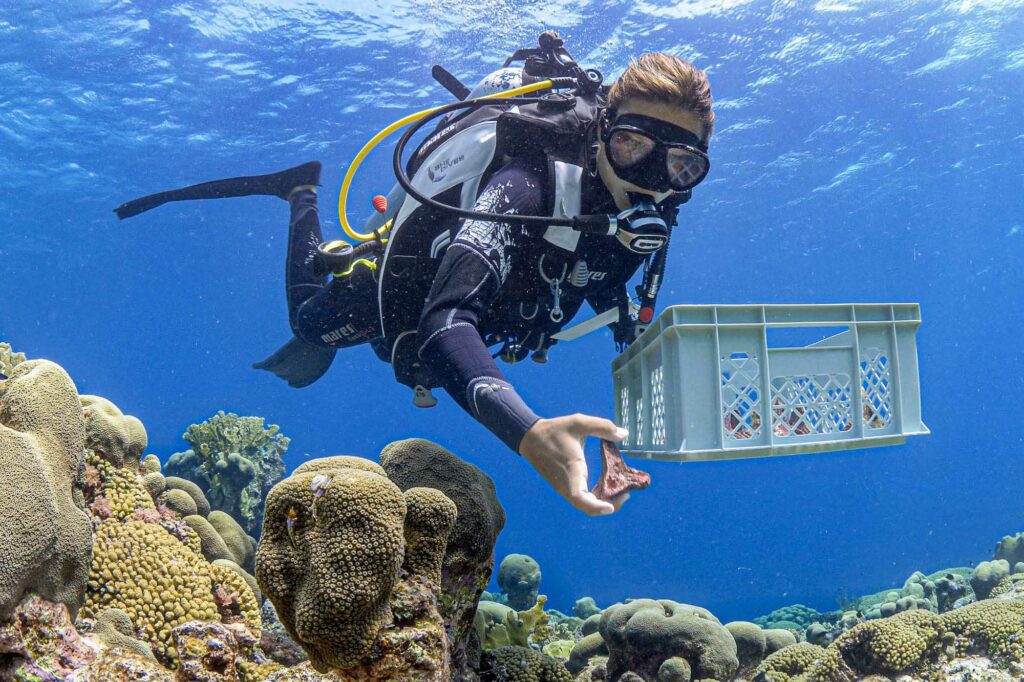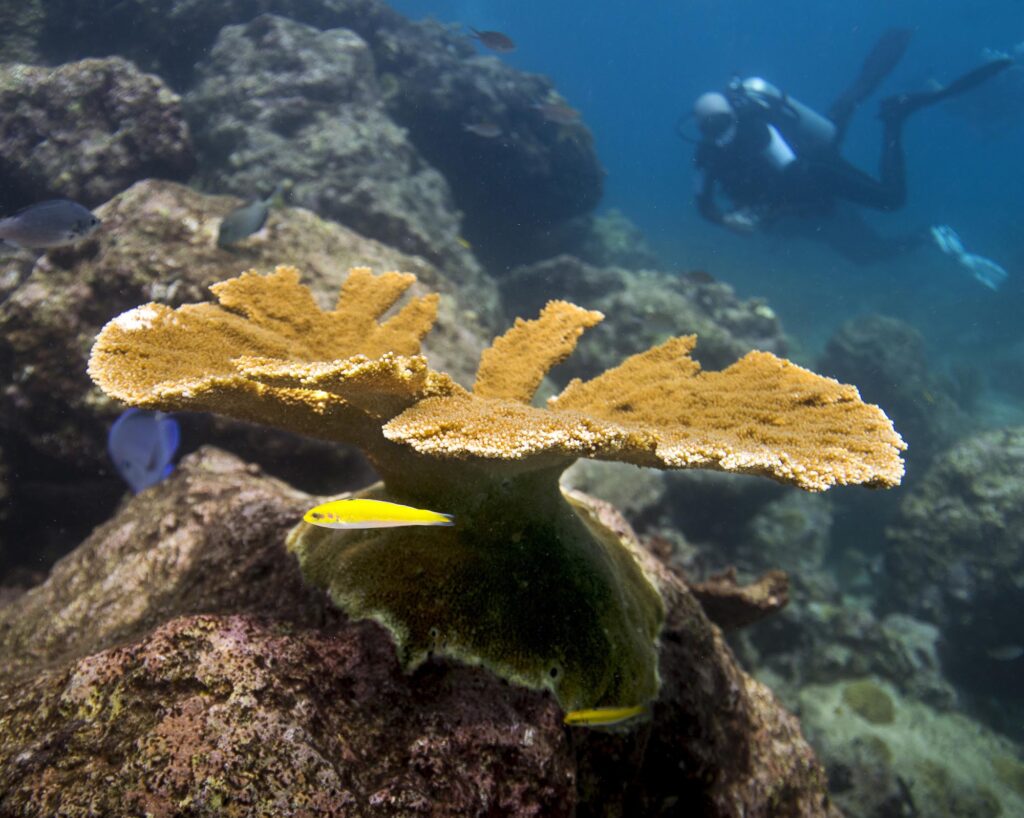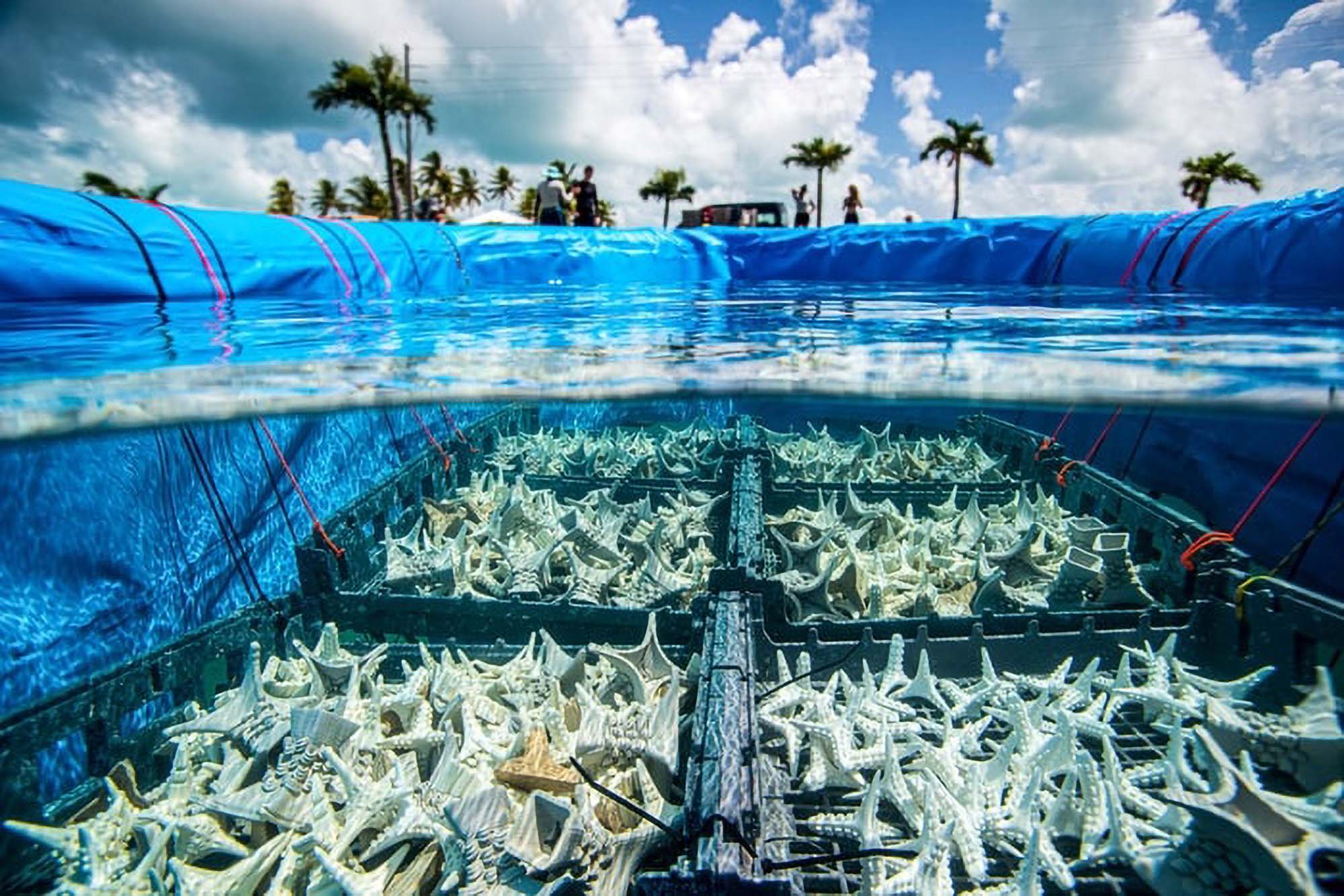A world-leading conservation group have developed cutting edge coral breeding technology that offers hope of saving the worlds coral reefs which are being decimated by pollution and climate change.
SECORE International develops techniques that use sexually bred corals for sustainable, biodiverse coral restoration on larger scales, using biological and engineering expertise to revive dying coral reefs.
A recent publication by SECORE scientists and co-authors at UNAM (National Autonomous University of Mexico) and Shedd Aquarium (US) in the peer-reviewed journal Restoration Ecology showed the significant progress that has been made in the field of coral breeding technology.
SECORE said in a statement that: “Coral reefs’ dire status has become more and more apparent to the wider public via reports of re-occurring global bleaching and disease events and subsequent mass die-offs of corals during the last decade.”
For this reason, they believe that the research into regenerating reefs is more important than ever.
SECORE breaks down the breeding programme into three phases. Firstly, corals spawning during natural spawning events are collected. Secondly, coral larvae are cultured into coral polyps. Thirdly, the young corals are placed back into the wild to contribute to reviving the damaged reef.
The study details the use of coral Rearing In-situ Basins (CRIBS), to produce coral larvae with no need for land-based labs or aquaculture facilities.
The system can be applied to any location where restoration work is necessary and has been found to be effective at rearing at least five different species of corals.

Kelly Latijnhouwers, the Caribbean restoration coordinator for SECORE, said in a statement: “They [CRIBs] are a safe place to support the coral babies through their first fragile life stages, including the radical change of a free-swimming coral larva turning into a sessile animal that eventually will grow into a coral colony.”
She added that the study found that the CRIBs system is as efficient at growing coral embryos into settled coral as land-based lab systems.
SECORE says that after the CRIBs system works its magic the coral larvae are settled on specifically designed substrates that are self-stabilizing on the reefs when brought back into the wild and don’t need labour-intensive active attachment.
They added that by using the corals’ own reproduction system huge numbers of coral babies can be created out of each natural spawning event whilst promoting genetic diversity in the restored population.
The team hope that in the future they can utilize selectively-bred or stress-hardened coral which copes better with warmer water temperatures.

Margaret Miller, SECORE’s Research Director, said: “SECORE’s work to develop techniques to effectively scale-up spawn collection, larval production, and out planting the coral recruits will be key to implementing these breeding interventions in the near future.”
Dirk Petersen, SECORE’s founder and Executive Director, said: “SECORE is one of the few organizations capable of addressing the needs to close the gap to scale for coral restoration, because of our innovative tools and techniques, and our expanding partner network.”
He concluded: “I feel a great responsibility and urgency in this race against irreversible loss. We need to advance our scientific research, technology development, and training and implementation programs at a much faster pace because every single coral spawning event is crucial in this race against time.”

Coral spawning, 
Baby coral on settlement tiles.
To find out more about the author, editor or agency that supplied this story – please click below.
Story By: Peter Barker, Sub-Editor: Joseph Golder, Agency: Newsflash
The Ananova page is created by and dedicated to professional, independent freelance journalists. It is a place for us to showcase our work. When our news is sold to our media partners, we will include the link here.




